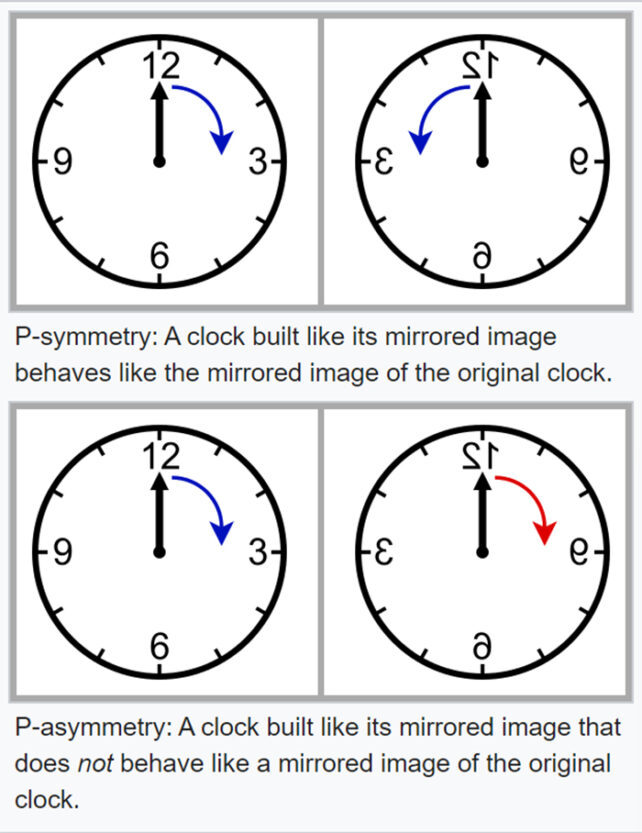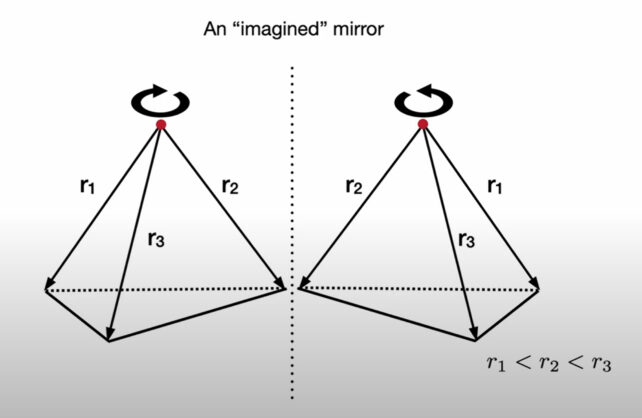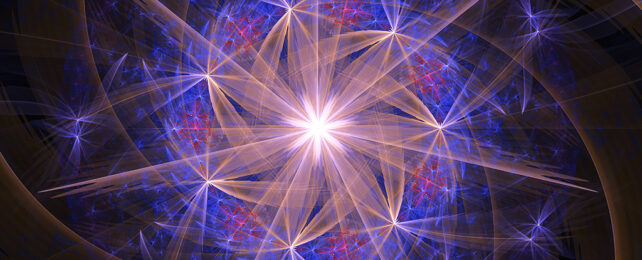Physicists have long puzzled over why there is more matter in the Universe than its flipped twin, antimatter. Without this imbalance, the two types of material would have canceled out, leaving nothing but a boring glow in the vast emptiness of space.
Somehow, at some point, something changed in the way the Universe works on a fundamental level, favoring the mirrored state – or parity – of one kind of 'stuff' over the other.
Scientists have sought clues to this critical moment in the remnants of the Big Bang, including the cosmic microwave background and gravitational waves, without much luck.
A study by a trio of astrophysicists from the University of Florida and the Lawrence Berkeley National Laboratory in the US has now found either a startlingly clear signal of such asymmetry soon after time began, or an absurdly specific random error.
What's more, their findings could settle the debate over whether the Universe went through a period of inflation soon after it precipitated into existence.
"Since parity violation can only be imprinted on the Universe during inflation, if what we found is true, it provides smoking-gun evidence for inflation," explains University of Florida astronomer Zachary Slepian.
Symmetry in physics isn't all that different to symmetry in art. Rotate a square 90 degrees, it will look like the square you started with. This rotational symmetry is fairly intuitive, though a change in orientation is just one way a thing can be transformed.
Time, charge, and parity – an adherence to a specific arrangement of coordinates (think of translations between your right and left hand) – can all describe symmetries in physics as well.

A violation of the symmetry of parity is a handy way to understand the emergence of physical forces, in particular the appearance of the weak force. In this case, only left-handed components of particles and right-handed components of antiparticles take part in weak interactions.
But the weak force is not strong enough to have influenced any bias of matter over antimatter, so its underlying asymmetry probably can't account for all this extra stuff we find ourselves made up of.
Studying the orientations of sets of four galaxies across our skies, University of Florida astronomer Jiamin Hou and colleagues were able to detect an asymmetry in parity at a much larger scale.
They used sets of four because a tetrahedron (triangle pyramid) is the simplest shape to have 'left' and 'right sidedness'. As the researchers put it, it's "the simplest shape that cannot be rotated into its mirror image in three-dimension (3D)."
In a perfectly symmetrical Universe, we'd expect to find an equal amount of 'left' and 'right handed' orientations among any tetrahedral distributions of galaxies.

But that was not what the researcher's analysis found, when using a supercomputer and new mathematical models to trace tetrahedrons between a mind-boggling million trillion sets of four bright red galaxies.
There was an imbalance in both sets of data Hou and her team tried – one set providing sufficient data to be considered highly significant.
Sigma probabilities are used to calculate the likelihood that the data in question is the result of something other than what is hypothesized. Five sigma is the threshold at which researchers are really confident that what they're seeing isn't merely the chaos of the Universe at work. The team's conclusions came in with a sigma of 7.
But Hou and team caution underestimation of noise within their databases could have added false galaxy detections which may not accurately reflect the real Universe, despite their tests not finding any sign this was the case.
So they now hope to repeat their calculations with larger, more accurate galaxy data provided by our new, more advanced telescopes like the Dark Energy Spectroscopic Instrument (DESI).
As University of Auckland cosmology researcher Shaun Hotchkiss explains on Cosmology Talks, a single anomaly like this could end up being a fluke; but when several link together there's more likely something to it.
In this case, a recent finding of parity violation was also found in cosmic birefringence – where polarity of a light wave causes it to move differently – but at a much lower certainty.
If the finding proves true, the next question would be how this change came to be. It may have arisen from some kind of quantum phenomenon as the compact Universe burst into being, or a force we have yet to discover.
"I've always been interested in big questions about the Universe. What is the beginning of the universe? What are the rules under which it evolves? Why is there something rather than nothing?" says Slepian. "This work addresses those big questions."
Their research was published in the Monthly Notices of the Royal Astronomical Society and Physical Review Letters.
